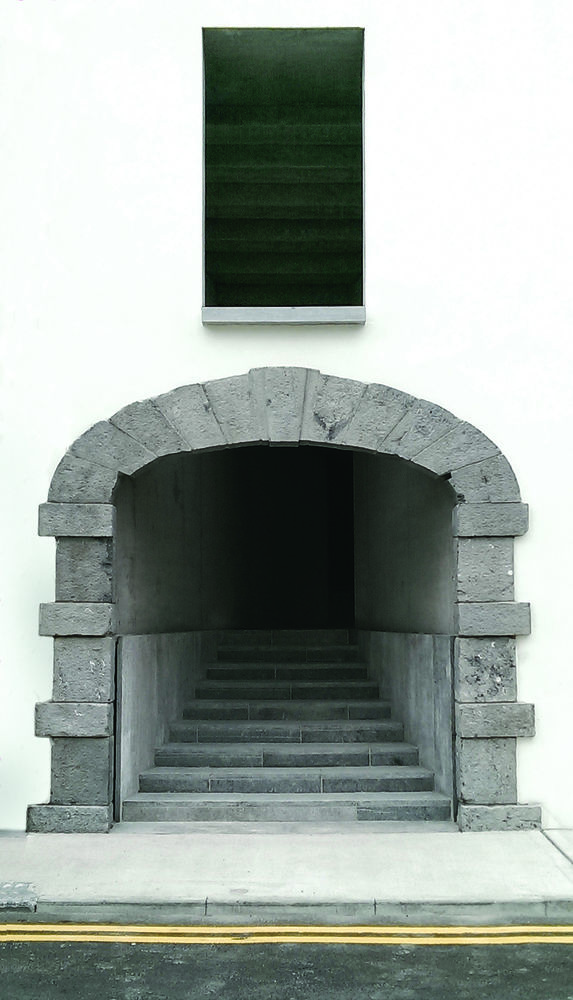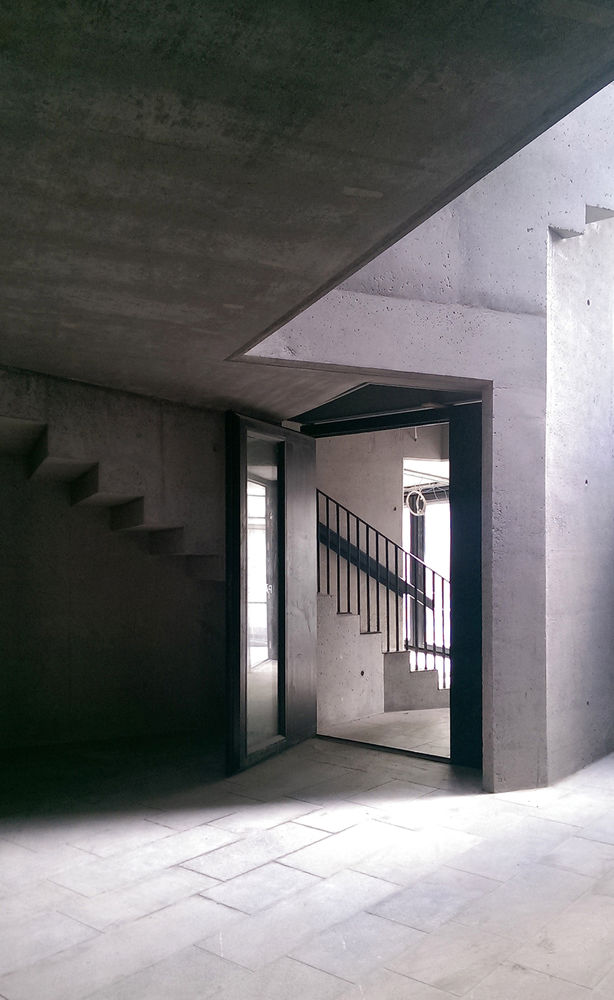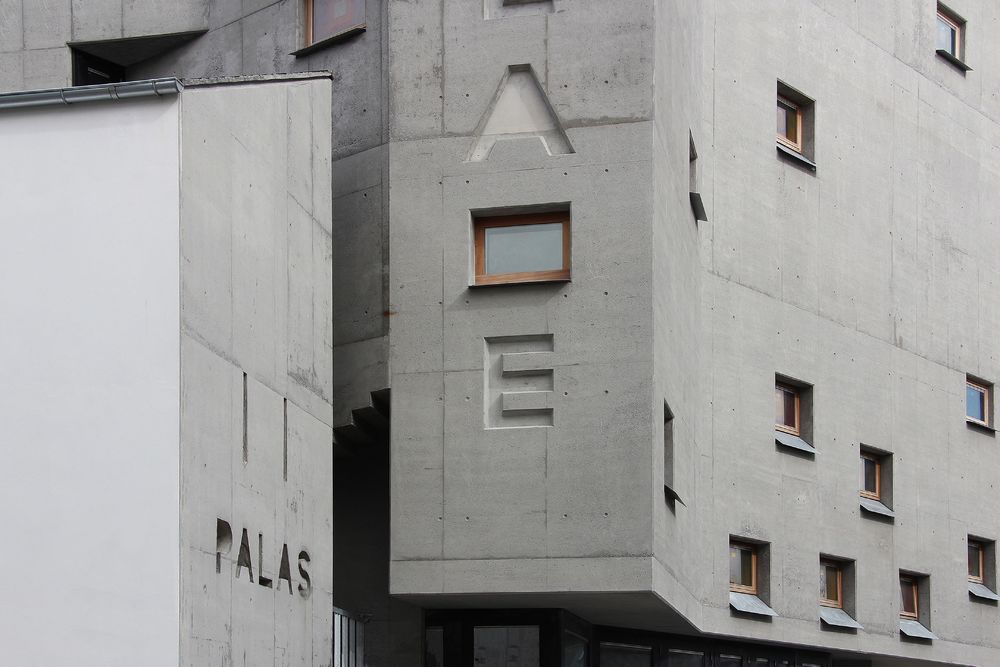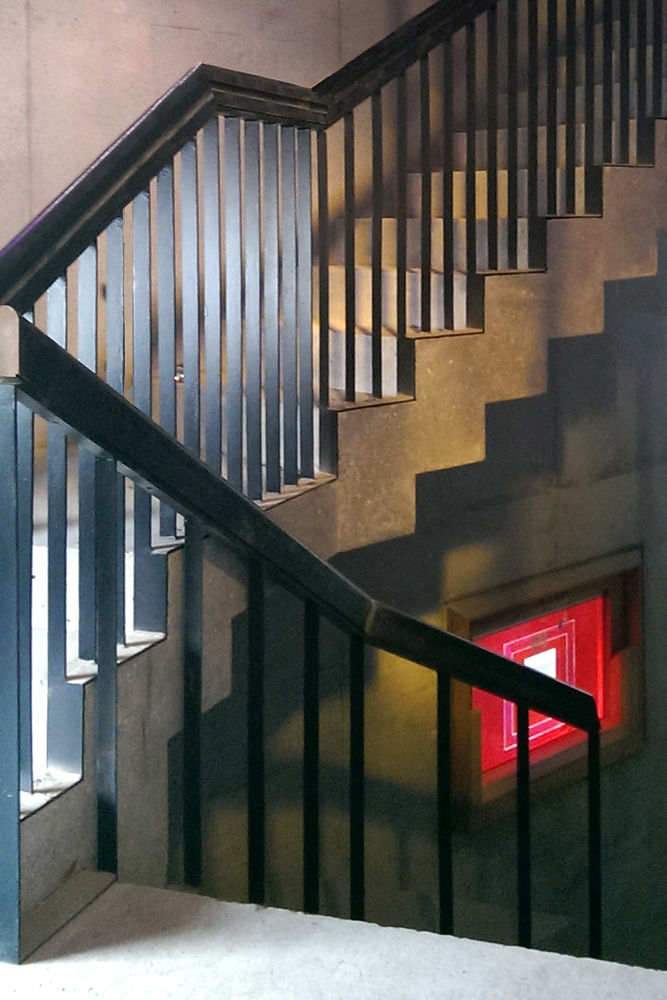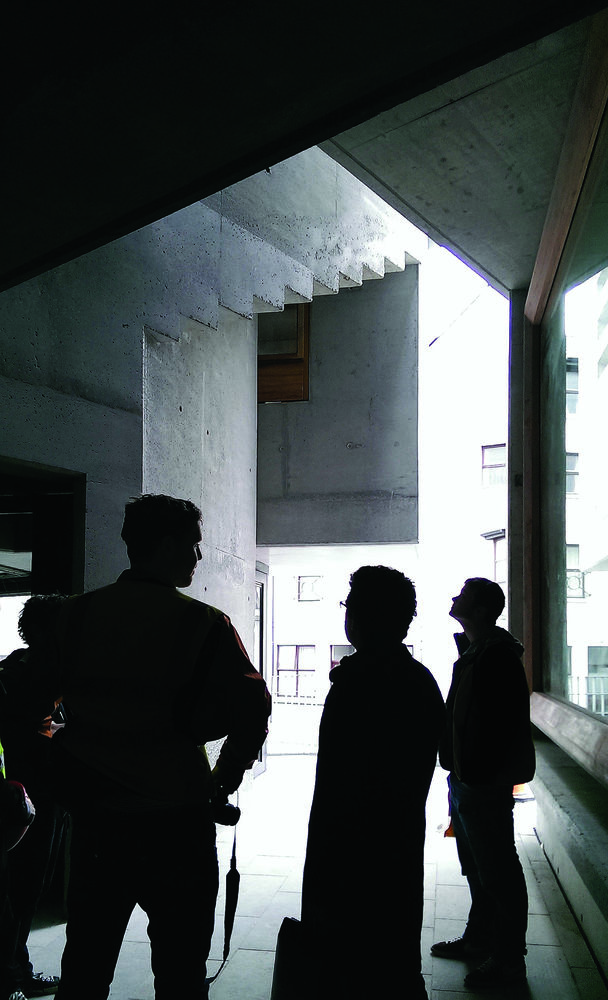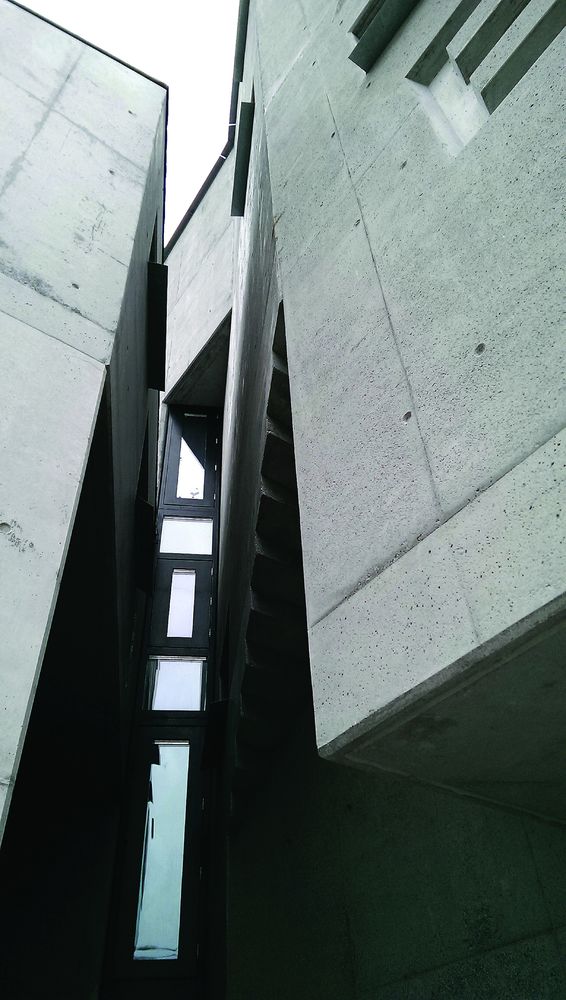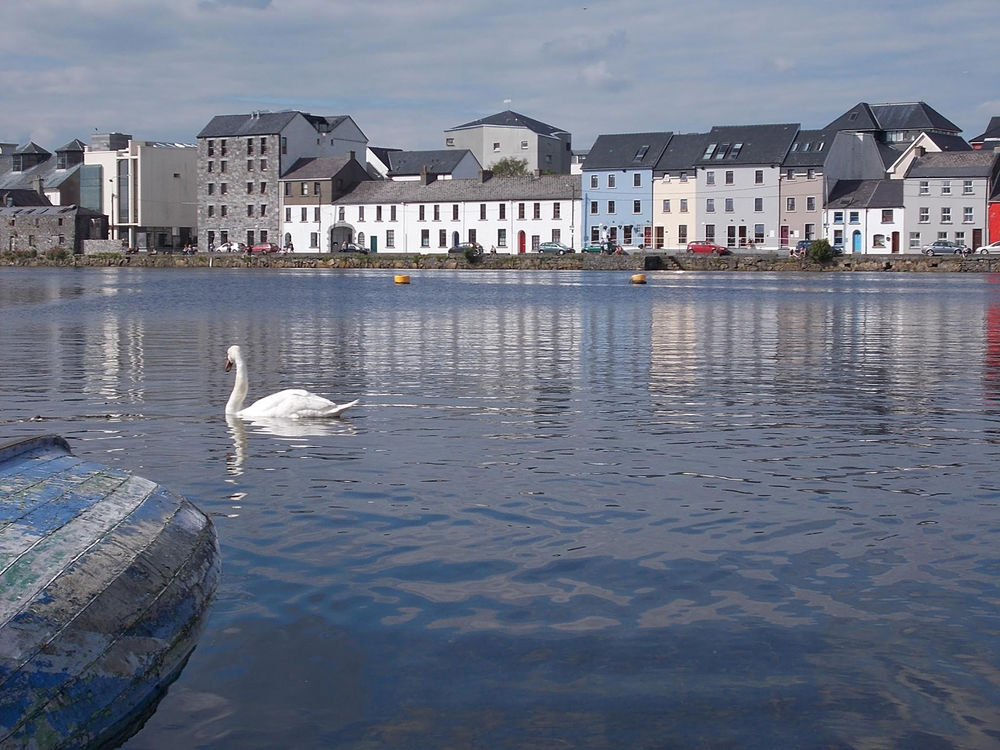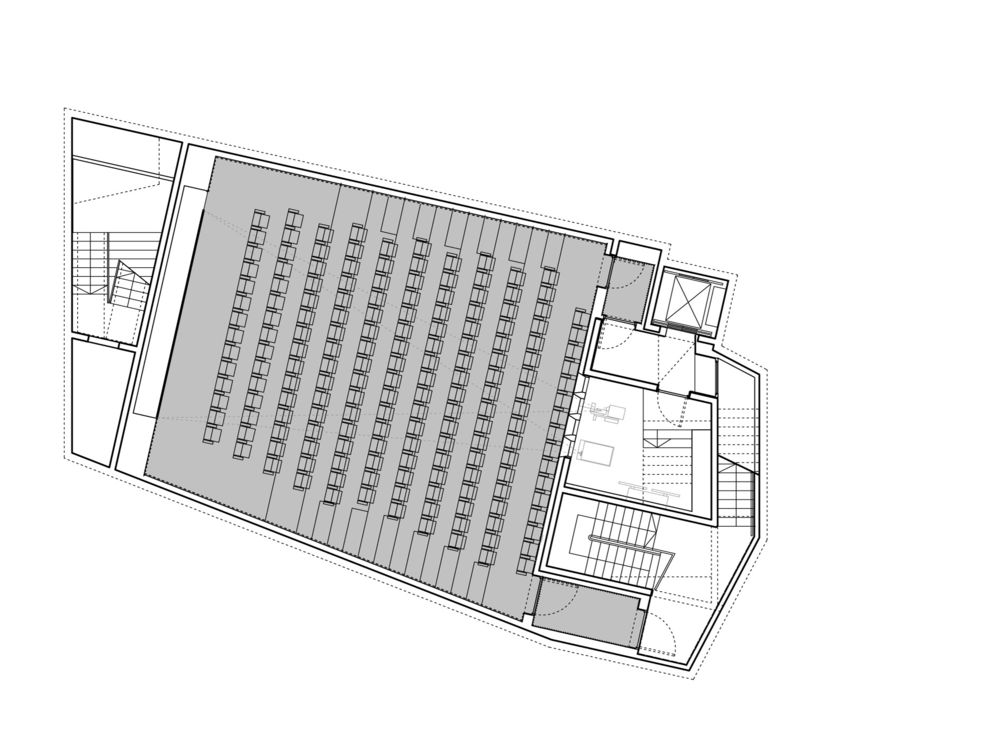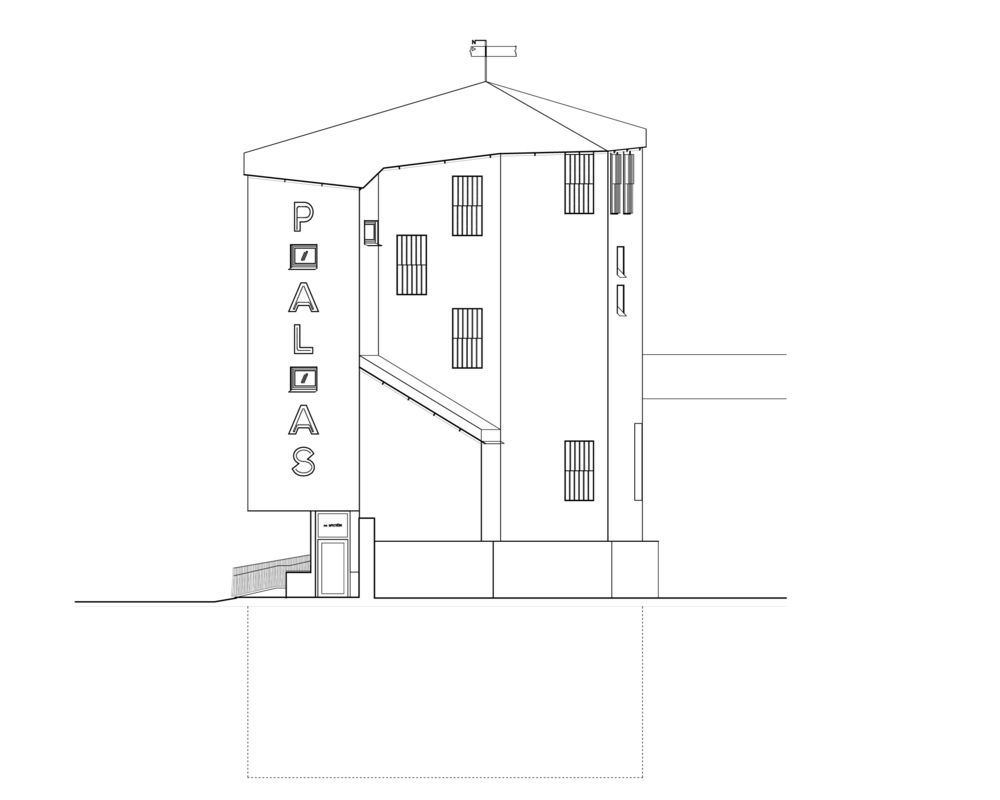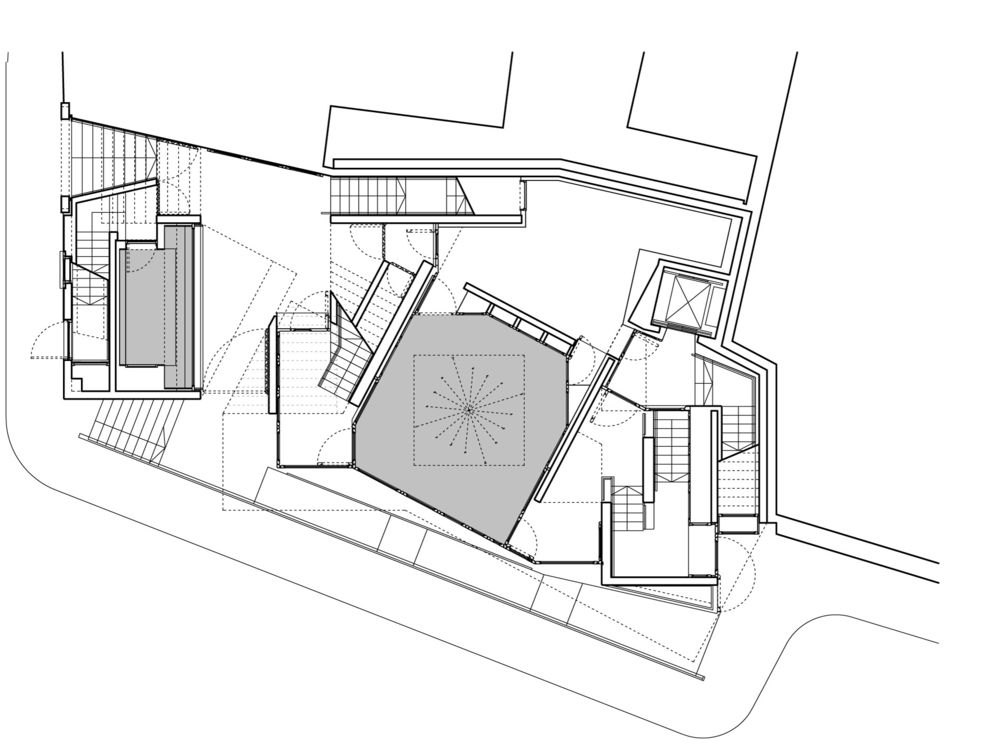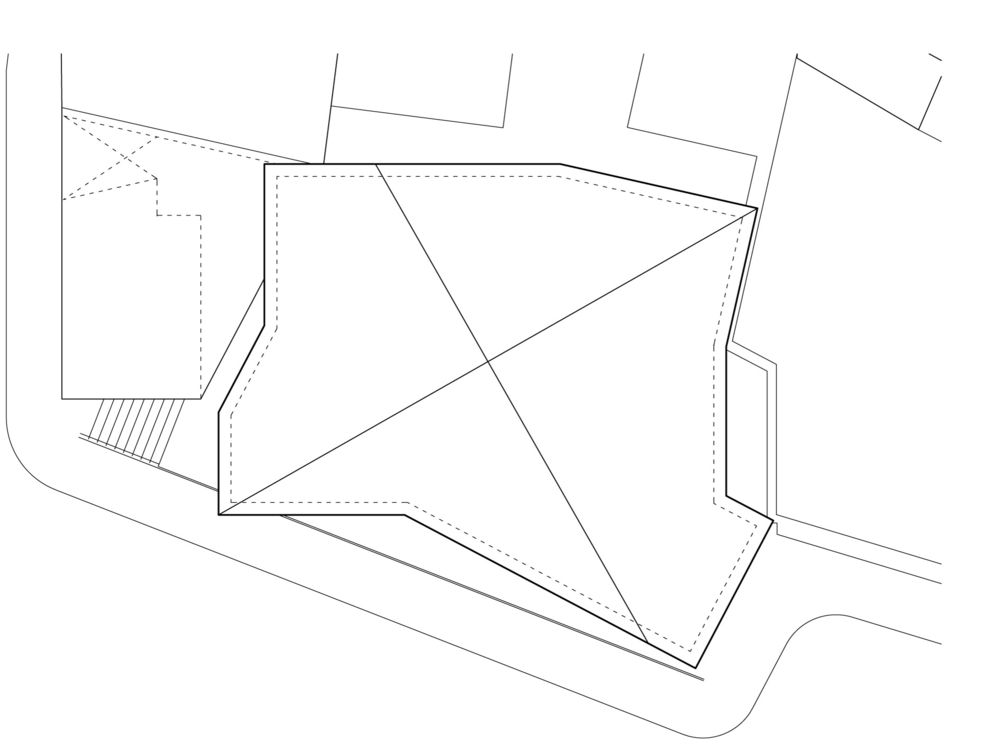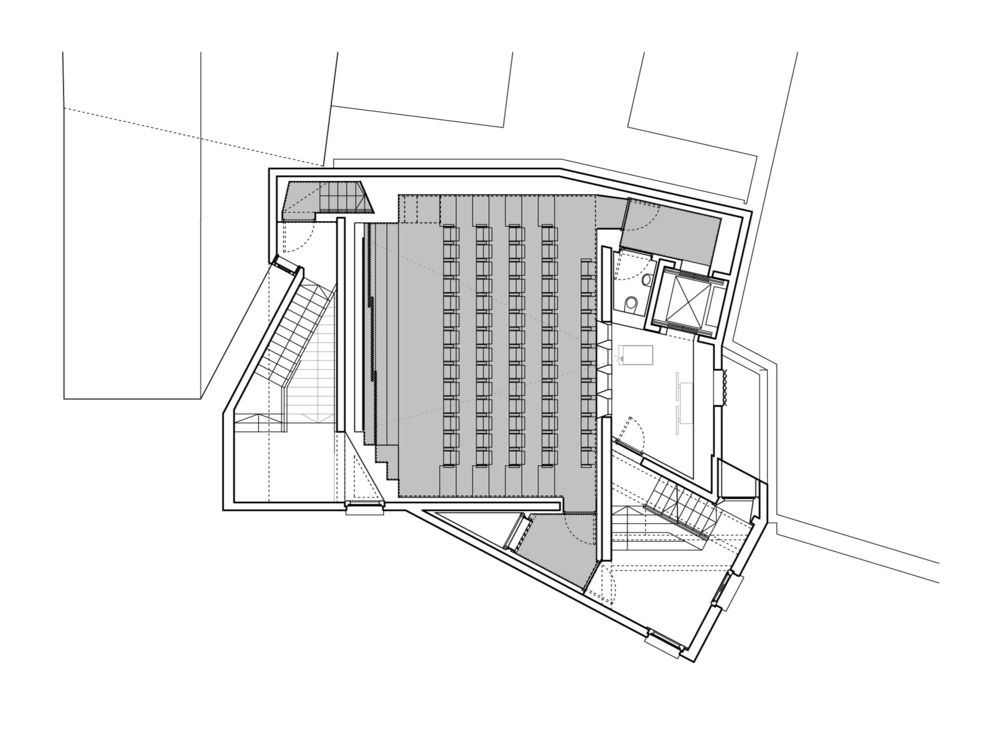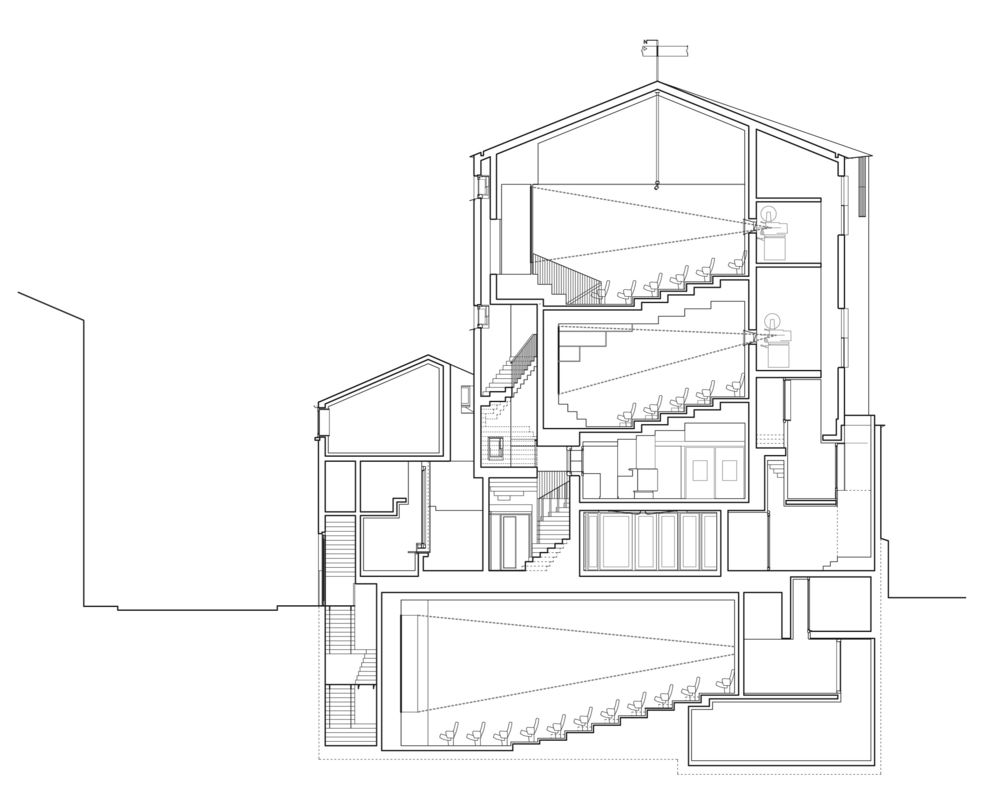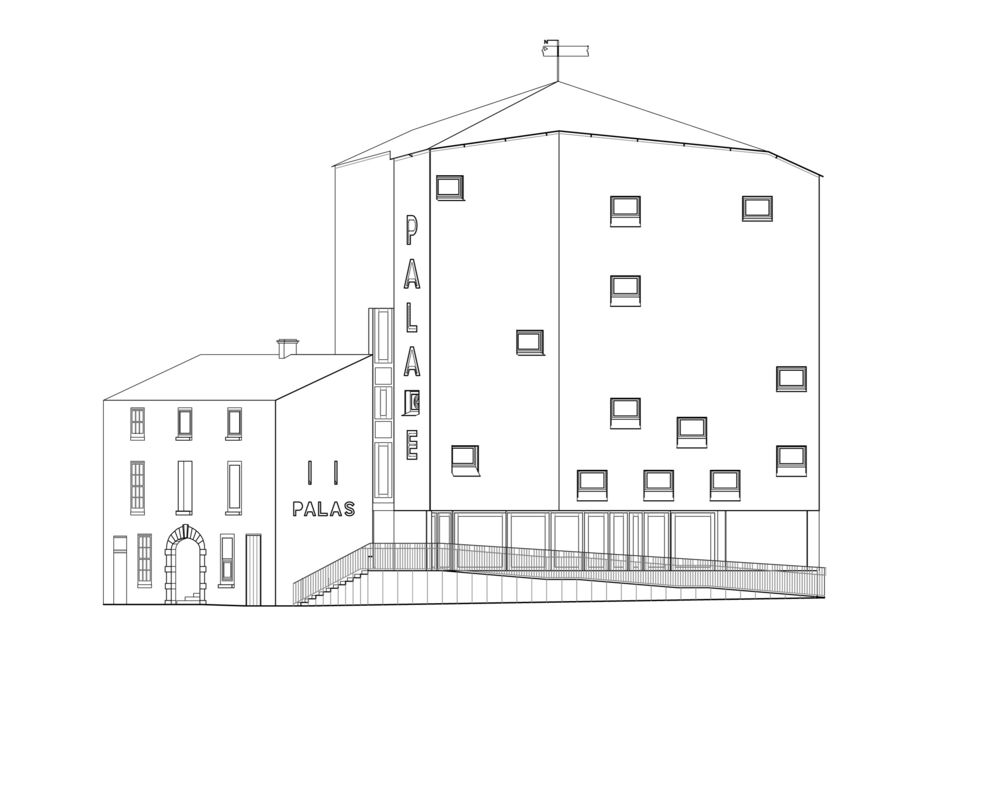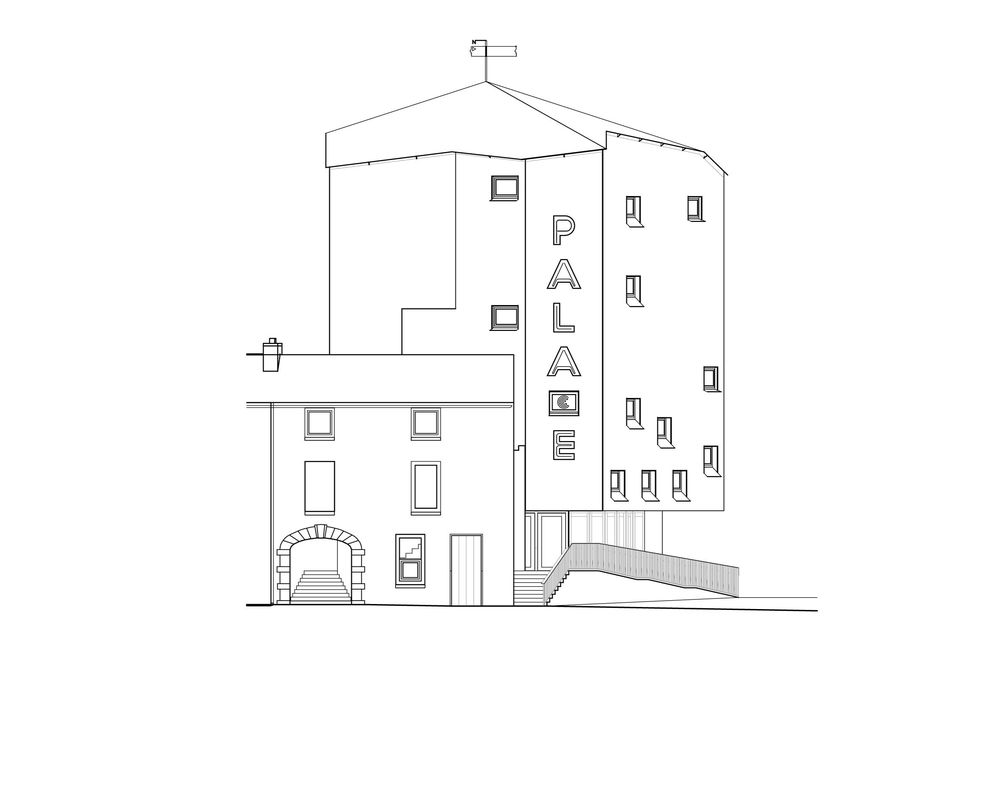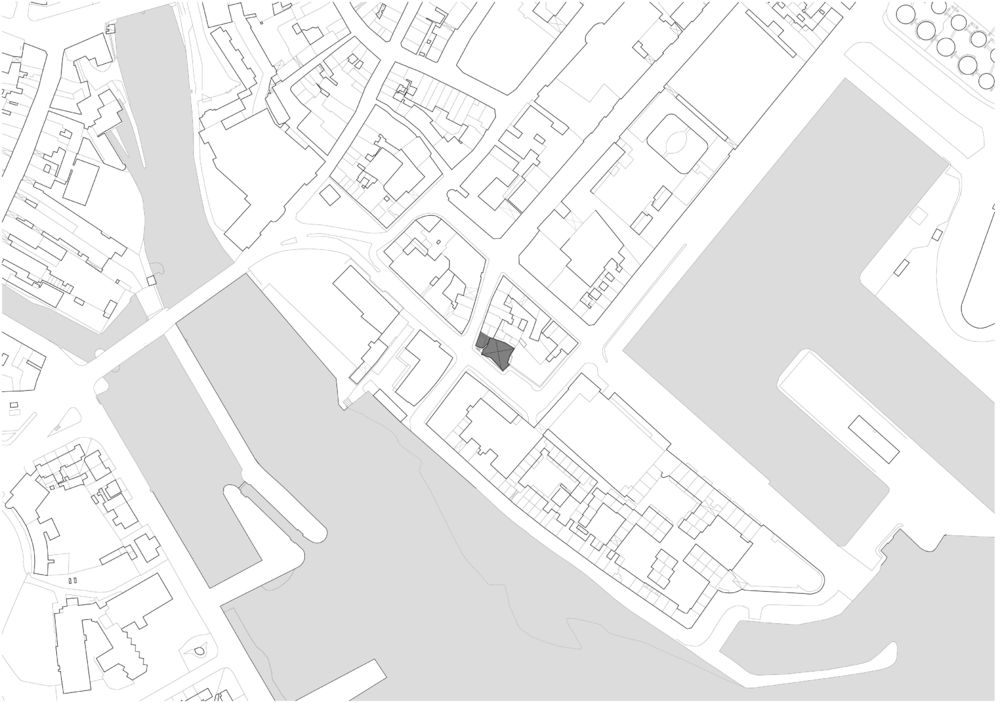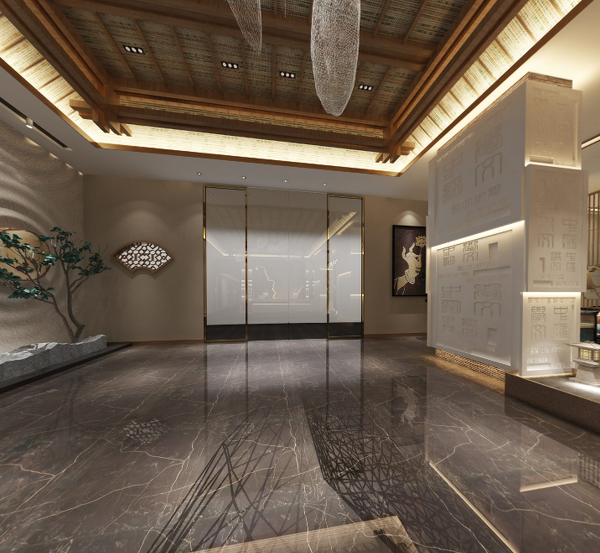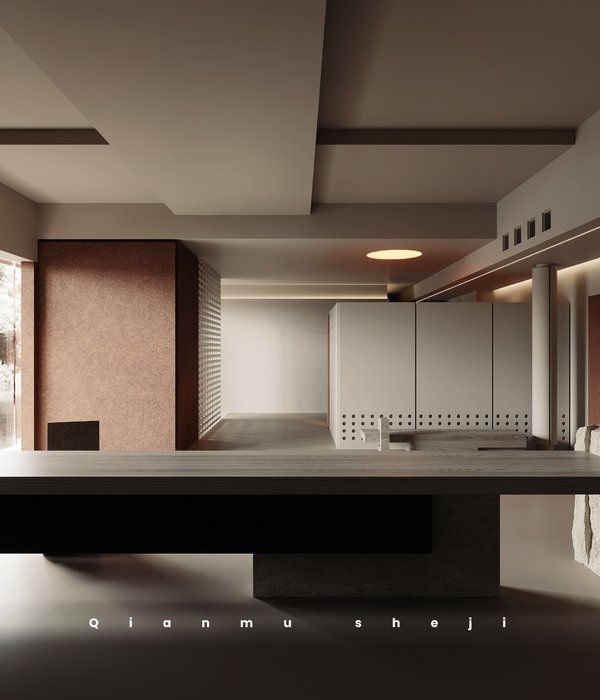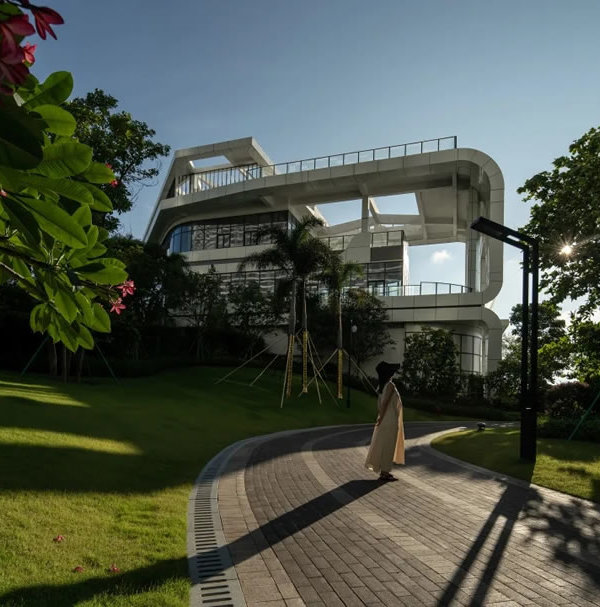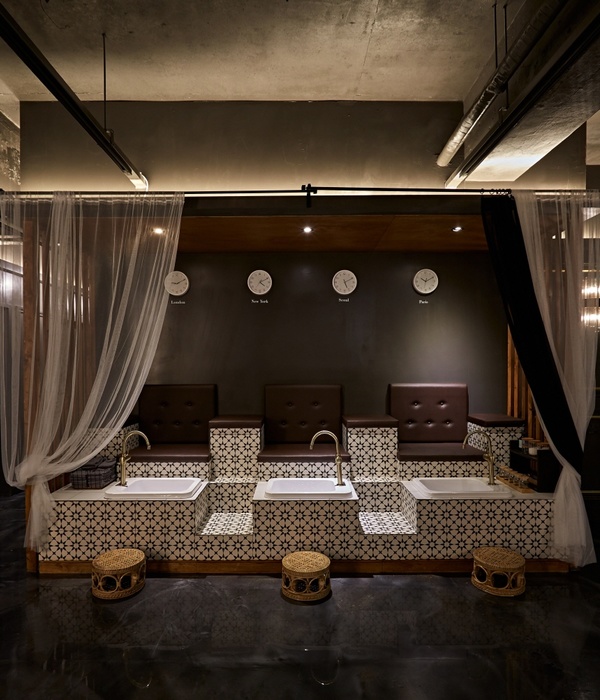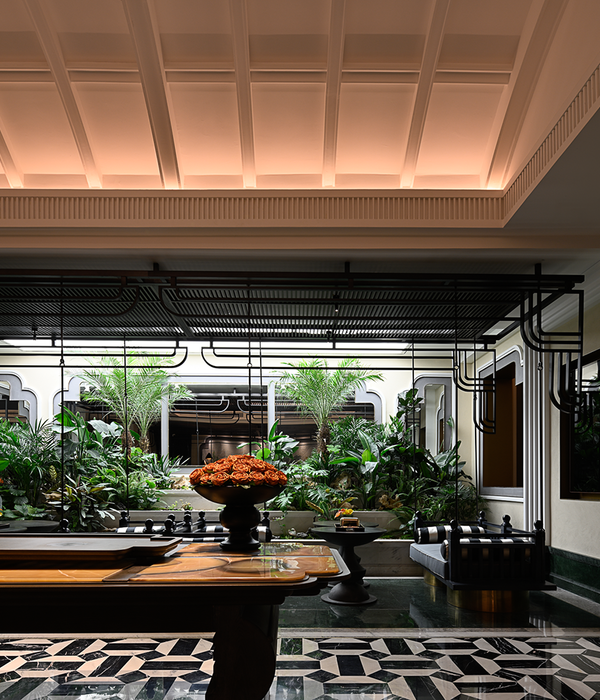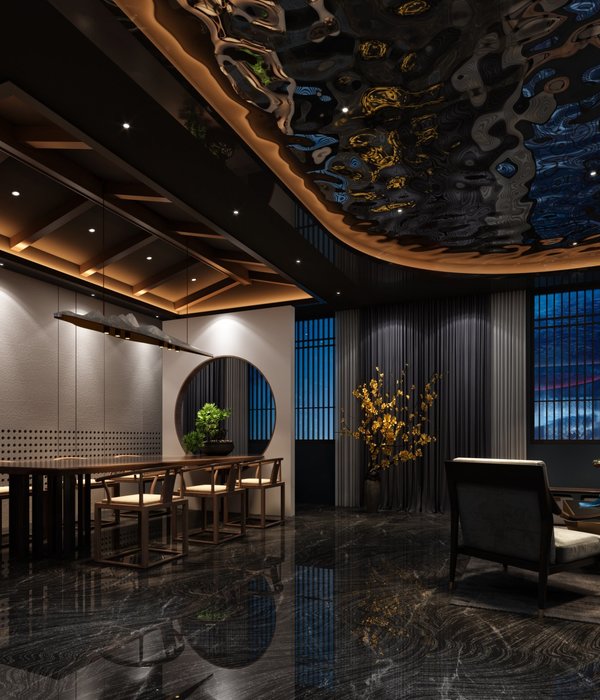爱尔兰 Galway 艺术影院 - 现代与传统的完美结合
Developed by Solas Galway Picture Palace Teoranta, with the financial assistance of Galway City Council, Department of Arts, Heritage and the Gaeltacht, Bord Scannan na hEireann / The Irish Film Board, the Arts Council and the Western Development Commission, the arthouse cinema is built on the plot of a Georgian merchants house and garden in Galway, in the west of Ireland. The three storey front facade of the house is remade in facsimile for streetscape making a new mono pitch gabled corner in polished concrete, and gatehouse to the stack of public rooms under a slate pyramid roof behind.
The structure of the building is a concrete monolith cast on perimeter secant pile wall of alternating hard and soft piles installed at 450mm centres. The concrete for the piles was 40N strength 70% GGBS with the remainder of the concrete at 50% cast in a metal pan system (with relief items set in), lined with shuttering plywood and cast where possible in double height pours, shotblasted and, polished in sections.
The structural scheme is a hybrid, consisting of two main transfer slabs at ground and first floor levels allowing the structure to shift, cantilevered off the front and rear walls of the cinemas. The remainder of the walls contribute to resolve the loadings with no depropping possible until the entire structure was completed.
The program is stacked and serviced between the public rooms and the curtain wall, making a sequence of urban staircases leading from the reinstated archway to an outside foyer and ticket kiosk. The circulation through the building remains untempered, in contrast to the lined rooms within. Both tearoom and bar are daylit and naturally ventilated, the first floor bar by solar stack, a triangular full height void behind the south facade.
Each room is dressed for atmosphere and the linings expressed as overlay to the concrete shell, the tearoom in glass, the bar in hardwood and the cinemas red fabric over acoustic insulation on foil backed plasterboard on thermal insulation on the in-situ concrete structure. In the top room, hung in the round, the screen curtain is integrated with the lining and withdraws over the entrance staircase. In the middle the interior draped in layers and at the bottom the fabric slung like an awning over the space. The upper cinema has a shallow stage in the depth of the proscenium which can be opened to daylight for interviews, lectures and other performance.
The windows are academy ratio proportioned casements, heavily framed and set 50 mm proud of the inner face of the in-situ concrete wall. A 6mm galvanised steel plate projects at 45 degrees as cill and grilles and gates are treated similarly to animate the facade. Some become vitrines for either signage or display and all of the glass is to designs by Patrick Scott, in suites of red, green and amber arranged to punctuate the front and back staircases and the bar. Painted in resin and sealed as a double glazed unit, they colour the space of the rooms and transform the building into a lantern to the city by night.

